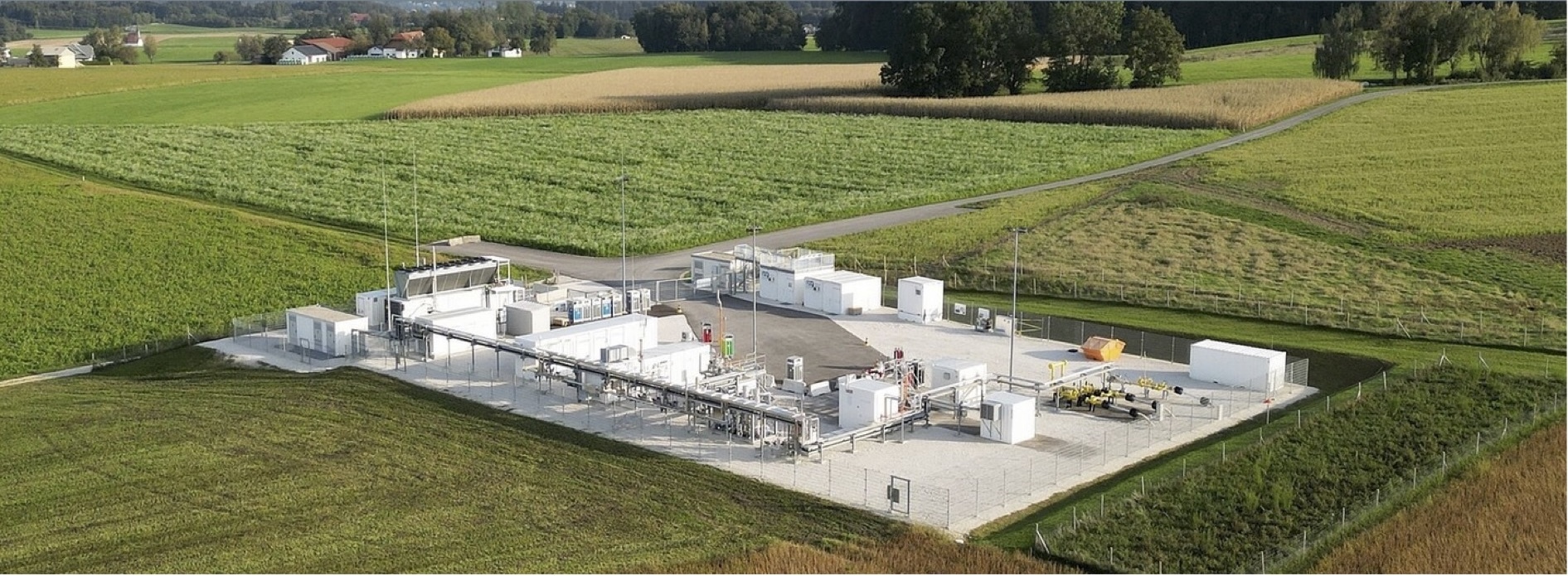Hydrogen storage in depleted natural gas fields technically feasible - Report from RAG Austria research event
On 14 and 15 May, RAG Austria AG (Renewables and Gas) hosted the Final Stakeholder Conference of the Underground Sun Storage 2030 project (USS2030 project) to present and discuss the research results. The very well organised, extremely entertaining conference was very well attended with > 80 international participants from the energy sector as well as the future potential customer base and focused exactly on the topics that hydrogen (H2) experts - with a focus on H2 storage in pore storage facilities - had expected. In short, it was "all set". From a technical perspective, the feasibility of H2 storage in depleted natural gas reservoirs or natural gas storage facilities was proven by means of very detailed, scientifically substantiated results, and the demonstration operation of a 2 MW electrolysis plant was documented. The plant configuration is shown in the diagram below, taken from the RAG Austria AG homepage.

The USS 2030 project was funded by the Federal Ministry for Innovation, Mobility and Infrastructure (BMIMI) as part of the RTI initiative "Vorzeigeregion Energie" of the Climate and Energy Fund. Renowned industry and university research partners, including Axiom Angewandte Prozesstechnik GmbH, Energie AG Oberösterreich, Energieinstitut an der Johannes-Kepler-Universität Linz, EVN AG, HyCentA Research GmbH, K1-MET GmbH, Vienna University of Technology, University of Natural Resources and Life Sciences Vienna, VERBUND, Verein WIVA P&G and voestalpine Stahl GmbH participated in the project, which was led by RAG Austria AG.
The successful completion of the demo operation shows that the planned natural gas pore reservoirs in the Upper Austrian region are technically suitable for storing H2 - despite the fact that each natural gas reservoir is different - meaning that there are no showstoppers in this direction. From a technical perspective, nothing would stand in the way of scaling commercially offered H2 storage services. However, large-volume storage of H2 within the framework of an (inter)national H2 market also requires
- regulation appropriate to the market status (ramp-up of the H2 market). During the discussions, the demand for "light touch regulation" was emphasised. In many areas, this demand is contrary to the regulations enshrined in Directive (RL) 2024/1788, which will soon be incorporated into Austrian law. The current approaches are more akin to heavy-handed regulation, as the initial proposals (basis for discussion) for the H2 market, in line with Directive 2024/1788, are based on the requirements of the natural gas market. Directive 2024/1788 does not take into account that the natural gas market - in contrast to the intended H2 market - is an established market that is regulated in the public interest. The ramp-up of an H2 market would require much more room for manoeuvre - with increased entrepreneurial risk. The national legislator does have the option of adapting the Austrian regulations to the situation in Austria within the framework of the requirements of Directive 2024/1788 - but to a relatively limited extent.
- This is because H2 is still far from competitive compared to natural gas, but also compared to H2 produced from fossil fuels by means of steam reformation. As exports of Austrian steel production, for example, are subject to strong global competition and will not be on a level playing field in the future due to the use of the Cross Border Adjustment Mechanism (CBAM), Austrian quality steel produced using (green) H2 would not be competitive, meaning that subsidies are unavoidable during the ramp-up phase - and in some cases afterwards. In times of tight state coffers, it will be difficult to obtain the necessary subsidies to a sufficient extent.
It seems that the industry has done its job - now the ball is in the politicians' court. Based on the difficult framework conditions, local H2 clusters are likely to form, which will be linked together over time to gradually form an (inter)national H2 network/market. Patience is required.
